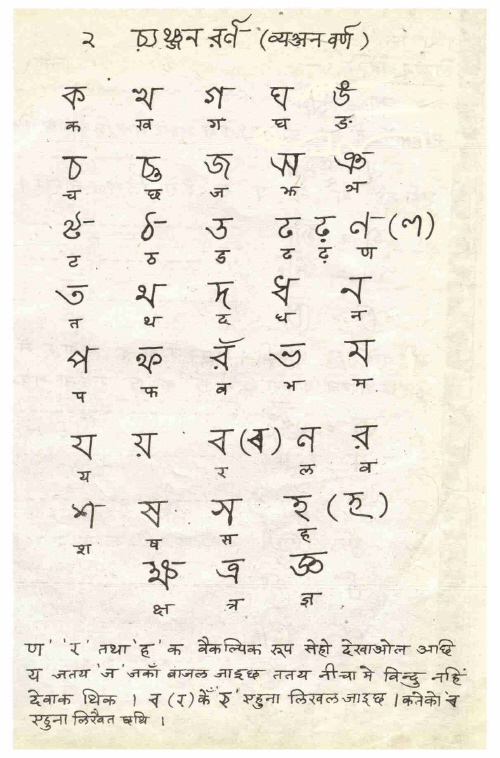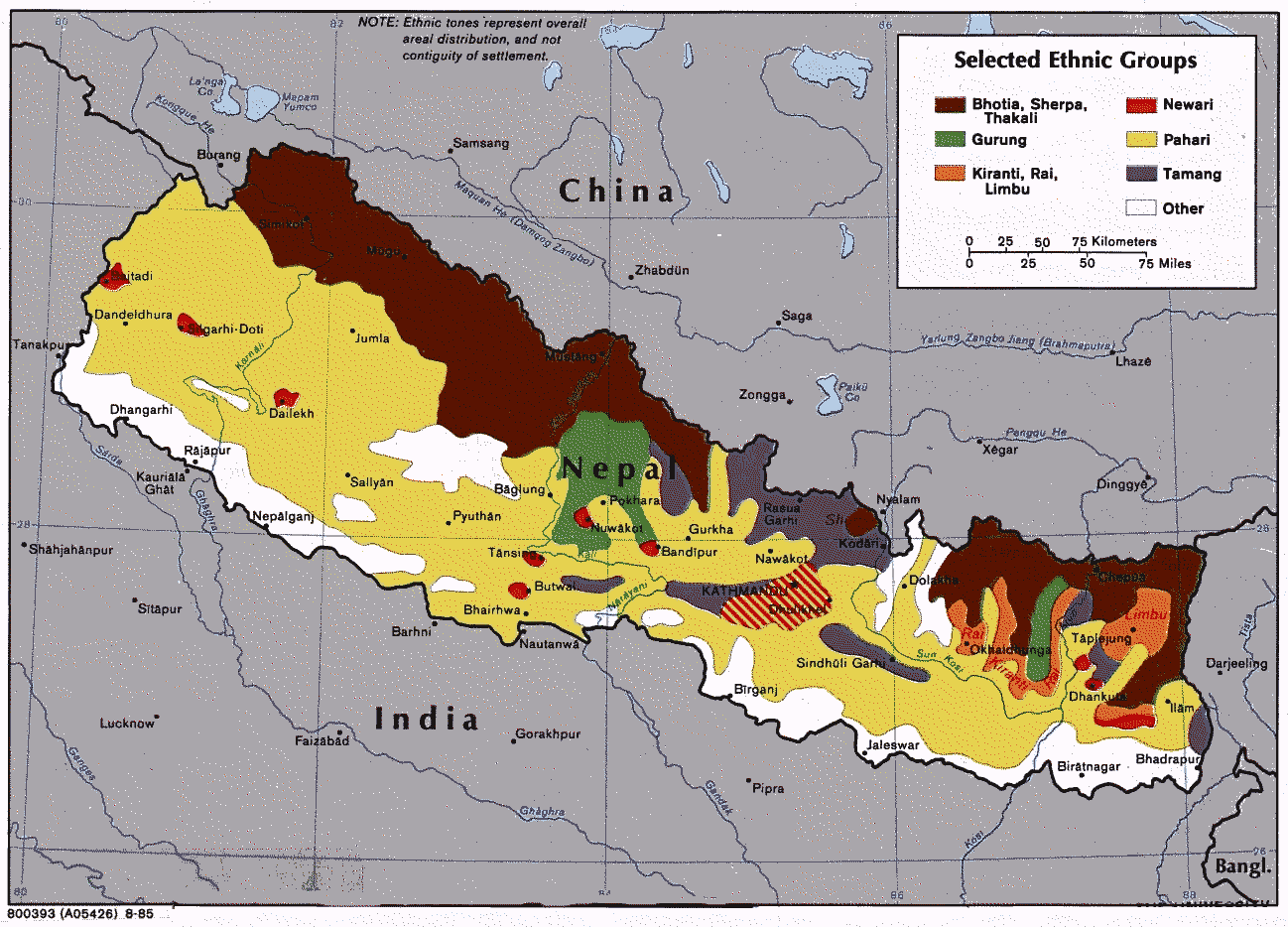|
Prithbinarayan
Gorkha (, formerly known as Prithvinarayan Municipality) is a List of cities in Nepal, municipality in Gorkha District in Gandaki Province of Nepal created in 1996. It was initially named "Prithvinarayan" () after King Prithvi Narayan Shah, who was born in Gorkha District, Gorkha and united and founded modern Nepal. In 2009, the name was changed to "Gorkha" municipality after the end of the monarchy in Nepal. At the time of the 2021 Nepal census it had a population of 53,285 people living in 12,641 individual households. In 2014, the neighboring Village development committee (Nepal), Village development committees Nareshwar, Phinam and thereafter Taple were merged into the municipality. Chhapthok, the most eastern Village, is the ward no.01 of the Municipality. The old royal palace (Gorkha Durbar), Gorakhnath and Kalika (temple of the goddess Kali) are the main attractions. The Royal Palace itself was destroyed in the 2015 earthquake. However the Gorakhnath shrine and Kalika temple ... [...More Info...] [...Related Items...] OR: [Wikipedia] [Google] [Baidu] |
Districts Of Nepal
Districts in Nepal are second level of administrative divisions after provinces. Districts are subdivided into municipalities and rural municipalities. There are seven provinces and 77 districts in Nepal. After the 2015 reform of administrative divisions, Nawalparasi District and Rukum District were respectively divided into Parasi District and Nawalpur District, and Eastern Rukum District and Western Rukum District. District officials District official include: * Chief District Officer, an official under Ministry of Home Affairs is appointed by the government as the highest administrative officer in a district. The C.D.O is responsible for proper inspection of all the departments in a district such as health, education, security and all other government offices. * District Coordination Committee acts as an executive to the District Assembly. The DCC coordinates with the Provincial Assembly to establish coordination between the Provincial Assembly and rural muni ... [...More Info...] [...Related Items...] OR: [Wikipedia] [Google] [Baidu] |
Municipality
A municipality is usually a single administrative division having municipal corporation, corporate status and powers of self-government or jurisdiction as granted by national and regional laws to which it is subordinate. The term ''municipality'' may also mean the governing body of a given municipality. A municipality is a general-purpose administrative subdivision, as opposed to a special district (United States), special-purpose district. The English language, English word is derived from French language, French , which in turn derives from the Latin language, Latin , based on the word for social contract (), referring originally to the Latin communities that supplied Rome with troops in exchange for their own incorporation into the Roman state (granting Roman citizenship to the inhabitants) while permitting the communities to retain their own local governments (a limited autonomy). A municipality can be any political jurisdiction (area), jurisdiction, from a sovereign state s ... [...More Info...] [...Related Items...] OR: [Wikipedia] [Google] [Baidu] |
Gorkha Durbar
The Gorkha Palace, located in the Gorkha district of Nepal, is a historic landmark built in the 16th century by Ram Shah. The palace is built on top of a hill at an altitude of about . This palace is an hour walk from the downtown Gorkha bazaar. The palace is the birthplace of the king Prithvi Narayan Shah who was born in 1723 and started the unification of Nepal. Prithvi Narayan Shah was born in the Dhuni Pari, a part of the Palace. The Palace The palace lies on the hilltop and is completely fortified. It is an example of Newari architecture. The walls of the palace are about three feet thick. The floors are supported by extended wooden beams. The Palace exemplifies architectural brilliance The Gorkha Palace showcases a remarkable blend of traditional Newari architecture and strategic military design. Built primarily of wood and stone, the structure reflects the craftsmanship of Newari artisans and the architectural principles of the time from the Nepa Valley region (Outsi ... [...More Info...] [...Related Items...] OR: [Wikipedia] [Google] [Baidu] |
Maithili Language
Maithili ( , ) is an Indo-Aryan language spoken in parts of India and Nepal. It is native to the Mithila region, which encompasses parts of the eastern Indian states of Bihar and Jharkhand as well as Nepal's Koshi Province, Koshi and Madhesh Provinces. It is one of the 22 scheduled languages of India. It is the second most commonly spoken native languages of Nepal, Nepalese language constitutionally registered as one of the fourteen provincial official languages of Nepal. It is spoken by 21.7 million people. Of those, 3.2 million are Nepalis, Nepalese speakers. The language is predominantly written in Devanagari, but the historical Tirhuta script, Tirhuta and Kaithi scripts retained some use until today. Official status In 2003, Maithili was included in the 8th Schedule, Eighth Schedule of the Indian Constitution as a recognised language of India, Indian language, which allows it to be used in education, government, and other official contexts in India. The Maithili language i ... [...More Info...] [...Related Items...] OR: [Wikipedia] [Google] [Baidu] |
Hindi
Modern Standard Hindi (, ), commonly referred to as Hindi, is the Standard language, standardised variety of the Hindustani language written in the Devanagari script. It is an official language of India, official language of the Government of India, alongside English language, English, and is the ''lingua franca'' of North India. Hindi is considered a Sanskritisation (linguistics), Sanskritised Register (sociolinguistics), register of Hindustani. Hindustani itself developed from Old Hindi and was spoken in Delhi and neighbouring areas. It incorporated a significant number of Persian language, Persian loanwords. Hindi is an Languages with official status in India, official language in twelve states (Bihar, Gujarat , Mizoram , Maharashtra ,Chhattisgarh, Haryana, Himachal Pradesh, Jharkhand, Madhya Pradesh, Rajasthan, Uttar Pradesh, Uttarakhand), and six Union territory, union territories (Andaman and Nicobar Islands, Delhi, Chandigarh, Dadra and Nagar Haveli and Daman and Di ... [...More Info...] [...Related Items...] OR: [Wikipedia] [Google] [Baidu] |
Ghale Language
Ghale is a Tibeto-Burman language of Nepal. It belongs to the group of Ghale languages. The dialects of Ghale have limited intelligibility: (south) Barpak, Kyaura, Laprak, (north) Khorla, Uiya, Jagat, Philim, Nyak Dialects ''Ethnologue'' divides Ghale into the Northern and Southern varieties. *Northern Ghale (4,440 speakers as of 2006) is spoken in Buri Gandaki valley in Gorkha District, Gandaki Province. Dialects are Khorla, Uiya, Jagat, Philim, and Nyak. *Southern Ghale (21,500 speakers as of 2006) is spoken in the hills south of Macha Khola in Gorkha District, Gandaki Province Gandaki Province ( ) ), is one of the seven federal provinces established by the current constitution of Nepal which was promulgated on 20 September 2015. Pokhara is the province's capital city. It borders the Tibet Autonomous Region in Southw .... Dialects are Barpak, Kyaura, and Laprak. References Tamangic languages Languages of Nepal Languages of Gandaki Province {{SinoTibetan-l ... [...More Info...] [...Related Items...] OR: [Wikipedia] [Google] [Baidu] |
Newar Language
Newar (; , ) is a Sino-Tibetan languages, Sino-Tibetan language spoken by the Newar people, the indigenous inhabitants of Nepal Mandala, which consists of the Kathmandu Valley and surrounding regions in Nepal. The language is known officially in Nepal as Nepal Bhasa, a name that has been historically used for the language. The term "Newari" is also used to refer to the language, although the Indic ''-i'' suffix is considered inappropriate by some Newar speakers. The language served as the official language of Nepal during the Malla dynasty (Nepal), Malla dynasty since the 14th century till the end of dynasty in 1769 during which the language was referred as "Nepal Bhasa", a term which literally means "Nepalese Language". However, the language is not the same as Nepali language, Nepali, an Indo-Aryan languages, Indo-Aryan language and the current official language of Nepal, which only got the name Nepali in the 1930s. Newar literature, Literature in Newar is one of the oldest i ... [...More Info...] [...Related Items...] OR: [Wikipedia] [Google] [Baidu] |
Bhojpuri Language
Bhojpuri (IPA: ; Devanagari: , Kaithi: ) is an Indo-Aryan language native to the Bhojpuri region, Bhojpur-Purvanchal region of India and the Terai region of Nepal.:ethnologue:bho, Bhojpuri Ethnologue World Languages (2009) It is chiefly spoken in eastern Uttar Pradesh, western Bihar, and northwestern Jharkhand in India, as well as western Madhesh Province, Madhesh, eastern Lumbini Province, Lumbini. It is also a minority language in Fiji, Mauritius, Suriname and historically primarily in the Natal (province), Natal province of South Africa. Fiji Hindi, an official language of Fiji, is a dialect of Bhojpuri spoken by the Indo-Fijians. Caribbean Hindustani is spoken by the Indo-Caribbean people in Guyana, Suriname, Jamaica and Trinidad and Tobago. In Mauritius, it is a recognised by the government and taught in university as well. Bhojpuri language is listed as potentially vulnerable language, vulnerable in the UNESCO World Atlas of Languages. Name The oldest presence of the ... [...More Info...] [...Related Items...] OR: [Wikipedia] [Google] [Baidu] |
Tamang Language
Tamangic language is spoken mainly in Tamangsaling Land in Nepal, Sikkim, West Bengal (Darjeeling) and North-Eastern India. It comprises Eastern Tamang, Northwestern Tamang, Southwestern Tamang, Eastern Gorkha Tamang, and Western Tamang. Lexical similarity between Eastern Tamang (which is regarded as the most prominent) and other Tamang languages varies between 81% and 63%. For comparison, the lexical similarity between Spanish and Portuguese is estimated at 89%. Ethnologue report for Spanish Dialects ''Ethnologue'' divides Tamang into the following varieties due to mutual unintelligibility. *Eastern Tamang: 759,000 in Nepal (2000 WCD). Population total all countries: 773,000. Sub-dialects are as follows. **Outer-Eastern Tamang (Sailung Tamang) **Central-Eastern Tamang (Temal Tamang) **Southwestern Tamang (Kath-Bhotiya, Lama Bhote, Murmi, Rongba, Sain, Tamang Gyoi, Tamang Gyot, Tamang Lengmo, Tamang Tam) *Western Tamang: 323,000 (2000 WCD). Sub-dialects are as follows. ** ... [...More Info...] [...Related Items...] OR: [Wikipedia] [Google] [Baidu] |
Magar Language
Magar Dhut (, ) is a Sino-Tibetan language spoken mainly in Nepal, southern Bhutan, and in Darjeeling, Assam and Sikkim, India, by the Magar people. It is divided into two groups (Eastern and Western) and further dialect divisions give distinct tribal identity. In Nepal 810,000 people speak the language. While the government of Nepal developed Magar language curricula, as provisioned by the constitution, the teaching materials have never successfully reached Magar schools, where most school instruction is in the Nepali language. It is not unusual for groups with their own language to feel that the "mother-tongue" is an essential part of identity. The Dhut Magar language is sometimes lumped with the Magar Kham language spoken further west in Bheri, Dhaulagiri, and Rapti zones. Although the two languages share many common words, they have major structural differences and are not mutually intelligible. Geographical distribution Western Magar Western Magar (dialects: ''Pal ... [...More Info...] [...Related Items...] OR: [Wikipedia] [Google] [Baidu] |
Urdu
Urdu (; , , ) is an Indo-Aryan languages, Indo-Aryan language spoken chiefly in South Asia. It is the Languages of Pakistan, national language and ''lingua franca'' of Pakistan. In India, it is an Eighth Schedule to the Constitution of India, Eighth Schedule language, the status and cultural heritage of which are recognised by the Constitution of India. Quote: "The Eighth Schedule recognizes India's national languages as including the major regional languages as well as others, such as Sanskrit and Urdu, which contribute to India's cultural heritage. ... The original list of fourteen languages in the Eighth Schedule at the time of the adoption of the Constitution in 1949 has now grown to twenty-two." Quote: "As Mahapatra says: "It is generally believed that the significance for the Eighth Schedule lies in providing a list of languages from which Hindi is directed to draw the appropriate forms, style and expressions for its enrichment" ... Being recognized in the Constitution, ... [...More Info...] [...Related Items...] OR: [Wikipedia] [Google] [Baidu] |





